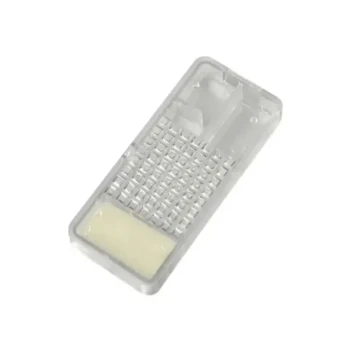Yes, honey bees leave their hives for several critical reasons, but the most dramatic and fundamental reason is for the reproduction of the entire colony. While individual worker bees leave daily to forage for nectar and pollen, a significant portion of the hive will depart en masse in a process known as swarming to establish a new home and ensure the continuation of their species.
The core reason a large group of honey bees leaves the hive is swarming, a natural reproductive behavior. It is not an abandonment or sign of distress, but a calculated splitting of the colony where the old queen and roughly half the workers depart to form a new community.

The Primary Driver: Colony Reproduction
The survival of a species depends on its ability to reproduce. For an individual animal, this is straightforward. For a superorganism like a honey bee colony, the entire community must reproduce itself, and this is achieved through swarming.
What is Swarming?
Swarming is the honey bee's natural method of colony multiplication. It is a deliberate and organized process that typically occurs in the spring when resources like nectar and pollen are abundant.
The process is initiated when the colony becomes strong and crowded. The worker bees will decide it is time to divide, ensuring the original hive can continue while a new one is established elsewhere.
The Role of the Queen
A honey bee colony can only have one egg-laying queen. Before a swarm, the workers will prepare special "queen cells" to raise new queens.
Just before a new queen emerges, the old queen will leave the hive. She does not leave alone; she takes approximately half of the worker bees with her, creating the swarm.
The Trigger for Departure
The primary trigger for swarming is colony strength and congestion. A thriving hive with a large population and ample food stores will eventually run out of space for brood and honey.
This crowding, combined with favorable spring weather, signals to the bees that the time is right to divide the colony and expand their territory.
Understanding the Swarming Process
When you see a swarm, you are witnessing one of nature's most impressive displays of collective decision-making. The process is orderly and focused on a single goal: finding a new home.
The Mass Exodus
The departure from the old hive happens quickly. Thousands of bees pour out and fill the air, creating a buzzing cloud. The queen is within this mass of bees.
This cloud of bees will soon settle in a temporary location, often on a nearby tree branch or post. They form a tight cluster around the queen to protect her while they plan their next move.
The Search for a New Home
From this temporary cluster, experienced "scout bees" fly out in all directions. They search for a suitable new nest site, such as a hollow tree or an empty cavity.
When a scout finds a promising location, it returns to the cluster and communicates its discovery through a sophisticated "waggle dance." Other scouts will inspect the site, and eventually, the bees reach a consensus on the best option before the entire swarm flies to its new, permanent home.
How to Interpret Bee Behavior
Understanding why bees leave their hives allows you to correctly interpret what you are seeing and react appropriately.
- If your primary focus is simple observation: A swarm of bees is a natural and healthy sign of bee reproduction. Bees in a swarm are typically docile because they have no hive, honey, or young to defend.
- If your primary focus is managing a beehive: Recognizing the precursors to swarming is a key skill for a beekeeper to prevent losing half of their bees and the primary queen.
Observing a honey bee swarm is a chance to witness the fascinating and effective survival strategy of a vital species.
Summary Table:
| Behavior | Primary Reason | Key Characteristics |
|---|---|---|
| Swarming | Colony Reproduction | Old queen & ~50% of workers leave to form a new hive. |
| Foraging | Resource Collection | Individual worker bees leave daily for nectar and pollen. |
| Scouting | Finding a New Home | Select bees search for and communicate potential nest sites. |
Need to Manage Swarming in Your Apiary?
Swarming is a sign of a healthy, strong colony, but it can mean a significant loss of bees for a beekeeper. Proper management and the right equipment are essential for maintaining hive health and productivity.
HONESTBEE supplies commercial apiaries and beekeeping equipment distributors with the high-quality, wholesale-focused supplies needed to effectively manage hives and prevent unwanted swarming. From hive components to swarm prevention tools, we provide the reliable equipment that supports your operation's success.
Contact our team today to discuss your wholesale beekeeping supply needs and keep your colonies thriving.
Visual Guide

Related Products
- HONESTBEE Collapsible Tiered Bee Swarm Catcher for Beekeeping
- HONESTBEE Professional Telescopic Pole Bee Swarm Catcher
- HONESTBEE Professional Long Handled Hive Tool with Precision Cutting Blade
- Twin Queen Styrofoam Honey Bee Nucs Mating and Breeding Box
- Plastic Transporting Bee Packages and Nuc Boxes for Beekeeping
People Also Ask
- How can swarming or absconding be prevented in a bee colony? Keep Your Hive Thriving with Proactive Management
- What information should be gathered before attempting to catch a swarm of bees? A Safe and Successful Guide
- How to attract bees to a bee box? Create an Irresistible Home for Honey Bee Swarms
- How to attract bees to a hive box? Proven Methods for Swarm Capture & Colony Expansion
- What are the three main ways to obtain honeybees? Choose the Best Path for Your Apiary



















